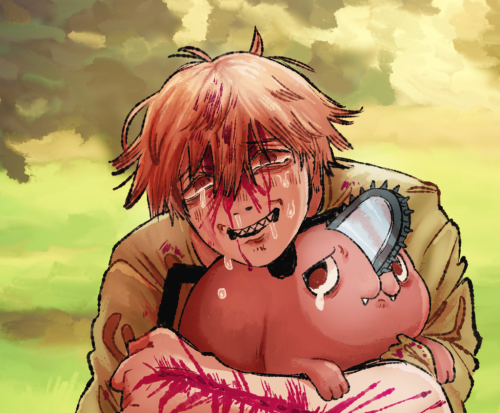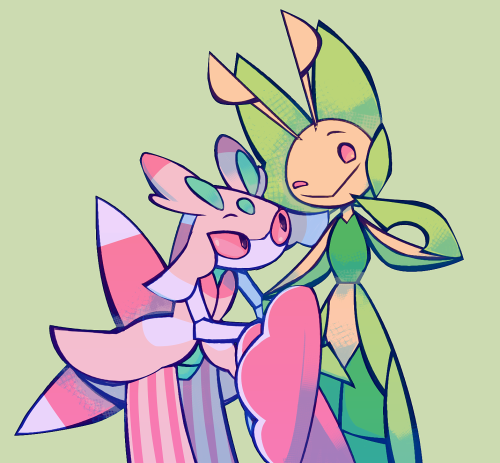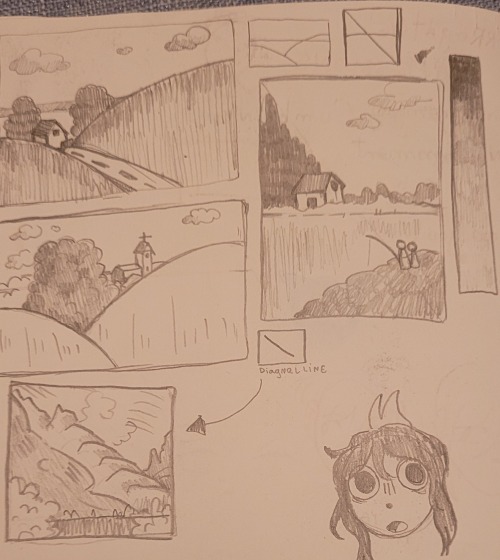My Federation Roier Design!!

my federation roier design!!
More Posts from Fantuline and Others
The Buff-Tip Moth: the resting posture, shape, and color/pattern of the buff-tip moth allows it to mimic a broken birch twig; the moth's buff-colored head and the patches on its hindwings even resemble freshly-snapped wood

It also definitely tends to look like there's a weird little smiley face in the setae surrounding the moth's head, which is arguably even more striking but for some reason none of the sources I dug up on this species seem to mention that weirdness.

This type of camouflage is generally referred to as a "protective resemblance" -- a form of mimesis in which an animal can avoid being preyed upon by mimicking an inedible/unremarkable aspect of its environment. Many different moths are able to disguise themselves in similar ways, and it is especially common within the family known as Lasiocampidae. Some of the other species that engage in protective resemblance include Gastropacha quercifolia, Gastropacha pardale, Gastropacha populifoli, Euthrix potatori, Euthrix laeta, and Calyptra minuticornis (along with the other members of genus Calyptra). Most of these moths disguise themselves as leaves/foliage.
The buff-tip moth is particularly adept at disguising itself, however, and the fact that it so strongly resembles such a specific object (i.e. not just a dead leaf or a vague piece of foliage -- but a broken twig from a silver birch tree, in particular) makes this disguise seem even more impressive/unique.
This species (Phalera bucephala) can be found throughout the British Isles, mainland Europe, and Asia, with its range extending into Eastern Siberia.

Sources & More Info:
Wildlife Insights: Buff-Tip Moth Identification Guide
ButterflyConservation.org: Buff-Tip Moth
The Wildlife Trusts: Buff-Tip Moth
Wildlife Insight: the Buff-Tip Moth
Moth Identification: P. busephala
Encyclopedia of Life: Global Map of Known Occurrences for P. busephala
Insecta: Phalera bucephala
Lepidoptera and their Ecology: P. busephaloides and P. busephala
Journal of Ecology & Evolution: Strong Foraging Preferences for Ribes alpinum in the Polyphagous Caterpillars of Buff-Tip Moth Phalera bucephala
Dickinson County Conservation Board: Protective Resemblance & other Forms of Mimesis/Mimicry





"Let me help you..." fEATURING MY OC AND MY FRIEND'S OC (the blue one) <3

Happy birthday Noel Levine!
Hi! do you know any interesting facts about Lurantis?
I do! I really like them, and while it's not a lurantis, my friend has a fomantis named Snapdragon who I absolutely love.
Lurantis Facts

-When lurantis were first discovered, there was a lot of controversy on why they should be classified as a bug type. But further research shows that it isn’t bugs pretending to be plants; it’s plants pretending to be bugs
-Scientists theorize that the reason lurantis became predators was because they weren’t getting enough sunlight at some point in history
-As ambush predators, lurantis are able to sit in an area for days without the need of sunlight or food; waiting for their next prey
-The Alolan saying, “A plant in bug’s silk,” which refers to someone who is pretending to be nice only to betray you, came from lurantis
-Male lurantis are slightly smaller than female luranits
-Newer studies show that ancient lurantis were shown to be grass/poison types. There is still a large debate among that between researchers, though
-Because of the the protectors on its eyes, everything it sees has a red tint

(Art by Kantarou on Zerochan.net)
-A common misconception is that the lurantis line is related to the leavanny line. This isn't true at all. Its similarities to leavanny is just convergant evolution
-Lurantis have a "flower mode," which is a state they go into when sleeping or going into camaflouge

(From concept art)
-Female lurantis are more aggressive than male lurantis. It's also one of the few species where the female will fight and compete for males
-They developed the "goggles" on their eyes to protect them from pollen and dust
-They care a lot about their appearance and will spend a lot of time editing it and preening themselves
-Lurantis are good pest controls for unwanted bug types
-Lurantis in Alola tend to be more colorful than the lurantis in any other region because of the amount of sun (the ones in Galar tend to be the dullest)
Care Tips
(For the Anon that asked but I couldn't awnser)

Lurantis can be a big change from fomantis. They become bigger, require more work, and are more aggressive. But once you get the hang of it and get used to daily routines, it won't be difficult at all!
Lurantis require a lot of sunlight and become wilted and irritable if they don't get enough. Giving them a lot of time outside where they have open sunlight is highly recommended. A good space for them would be an open field with a small pond or fountain to play in and bathe themselves.
If your lurantis is female, it can be harder to train them since they're more stubborn and aggressive. Trying to bond with them in activities they like or trying to understand why they won't listen (like why they use Solar beam instead of sword dance as an example). They're smart, and will find a way to communicate these issues with you.
They enjoy more aggressive playtime. Toys like the feather toys in Galar or tug of war would be games and toys they really enjoy.
A thing to look out for would be their sharp toe tips and the sharp tips at the end of their leaves. They can be as dangerous as knives, and you can get hurt if you touch them. Plus, they can scratch your walls and furniture
-
 inkspotzz liked this · 10 months ago
inkspotzz liked this · 10 months ago -
 erroryessica liked this · 1 year ago
erroryessica liked this · 1 year ago -
 vault-of-crows liked this · 1 year ago
vault-of-crows liked this · 1 year ago -
 yakamoznova liked this · 1 year ago
yakamoznova liked this · 1 year ago -
 beepboopbopbopping liked this · 1 year ago
beepboopbopbopping liked this · 1 year ago -
 bitchlessness reblogged this · 1 year ago
bitchlessness reblogged this · 1 year ago -
 bitchlessness liked this · 1 year ago
bitchlessness liked this · 1 year ago -
 birodactyloftheblog liked this · 1 year ago
birodactyloftheblog liked this · 1 year ago -
 ace-of-rabbits reblogged this · 1 year ago
ace-of-rabbits reblogged this · 1 year ago -
 lxrd-ren liked this · 1 year ago
lxrd-ren liked this · 1 year ago -
 veethegay liked this · 1 year ago
veethegay liked this · 1 year ago -
 pendulumplant liked this · 1 year ago
pendulumplant liked this · 1 year ago -
 furiouskittydragon liked this · 1 year ago
furiouskittydragon liked this · 1 year ago -
 studio-stephen liked this · 1 year ago
studio-stephen liked this · 1 year ago -
 galaxy-minecart reblogged this · 1 year ago
galaxy-minecart reblogged this · 1 year ago -
 fire-rose liked this · 1 year ago
fire-rose liked this · 1 year ago -
 sarchehe liked this · 1 year ago
sarchehe liked this · 1 year ago -
 pyrosomatic-metamorphosis reblogged this · 1 year ago
pyrosomatic-metamorphosis reblogged this · 1 year ago -
 qrcane liked this · 1 year ago
qrcane liked this · 1 year ago -
 fantastictriumphengineer liked this · 1 year ago
fantastictriumphengineer liked this · 1 year ago -
 demonetta7 liked this · 1 year ago
demonetta7 liked this · 1 year ago -
 howlitwashere reblogged this · 1 year ago
howlitwashere reblogged this · 1 year ago -
 howlitwashere liked this · 1 year ago
howlitwashere liked this · 1 year ago -
 sadzsa liked this · 1 year ago
sadzsa liked this · 1 year ago -
 meowwiexd liked this · 1 year ago
meowwiexd liked this · 1 year ago -
 distinguishedmeowygentlemen liked this · 1 year ago
distinguishedmeowygentlemen liked this · 1 year ago -
 greenkiwwis liked this · 1 year ago
greenkiwwis liked this · 1 year ago -
 niconomnom liked this · 1 year ago
niconomnom liked this · 1 year ago -
 screechingarcadechicken liked this · 1 year ago
screechingarcadechicken liked this · 1 year ago -
 beanpoleorange liked this · 1 year ago
beanpoleorange liked this · 1 year ago -
 www-elpis-com reblogged this · 1 year ago
www-elpis-com reblogged this · 1 year ago -
 www-elpis-com liked this · 1 year ago
www-elpis-com liked this · 1 year ago -
 flyingfrogs0 liked this · 1 year ago
flyingfrogs0 liked this · 1 year ago -
 asartesdacarol liked this · 1 year ago
asartesdacarol liked this · 1 year ago -
 pragmatic-but-eepy reblogged this · 1 year ago
pragmatic-but-eepy reblogged this · 1 year ago -
 cryinginbed liked this · 1 year ago
cryinginbed liked this · 1 year ago -
 temberry liked this · 1 year ago
temberry liked this · 1 year ago -
 che-sil liked this · 1 year ago
che-sil liked this · 1 year ago -
 nonamelxy liked this · 1 year ago
nonamelxy liked this · 1 year ago -
 tu-es-gegg reblogged this · 1 year ago
tu-es-gegg reblogged this · 1 year ago -
 implyedparty reblogged this · 1 year ago
implyedparty reblogged this · 1 year ago -
 implyedparty liked this · 1 year ago
implyedparty liked this · 1 year ago -
 beerie reblogged this · 1 year ago
beerie reblogged this · 1 year ago -
 meilyn912 liked this · 1 year ago
meilyn912 liked this · 1 year ago -
 emihiri liked this · 1 year ago
emihiri liked this · 1 year ago -
 shineogyy liked this · 1 year ago
shineogyy liked this · 1 year ago -
 rockin-it-rusty reblogged this · 1 year ago
rockin-it-rusty reblogged this · 1 year ago -
 kriskrass liked this · 1 year ago
kriskrass liked this · 1 year ago









